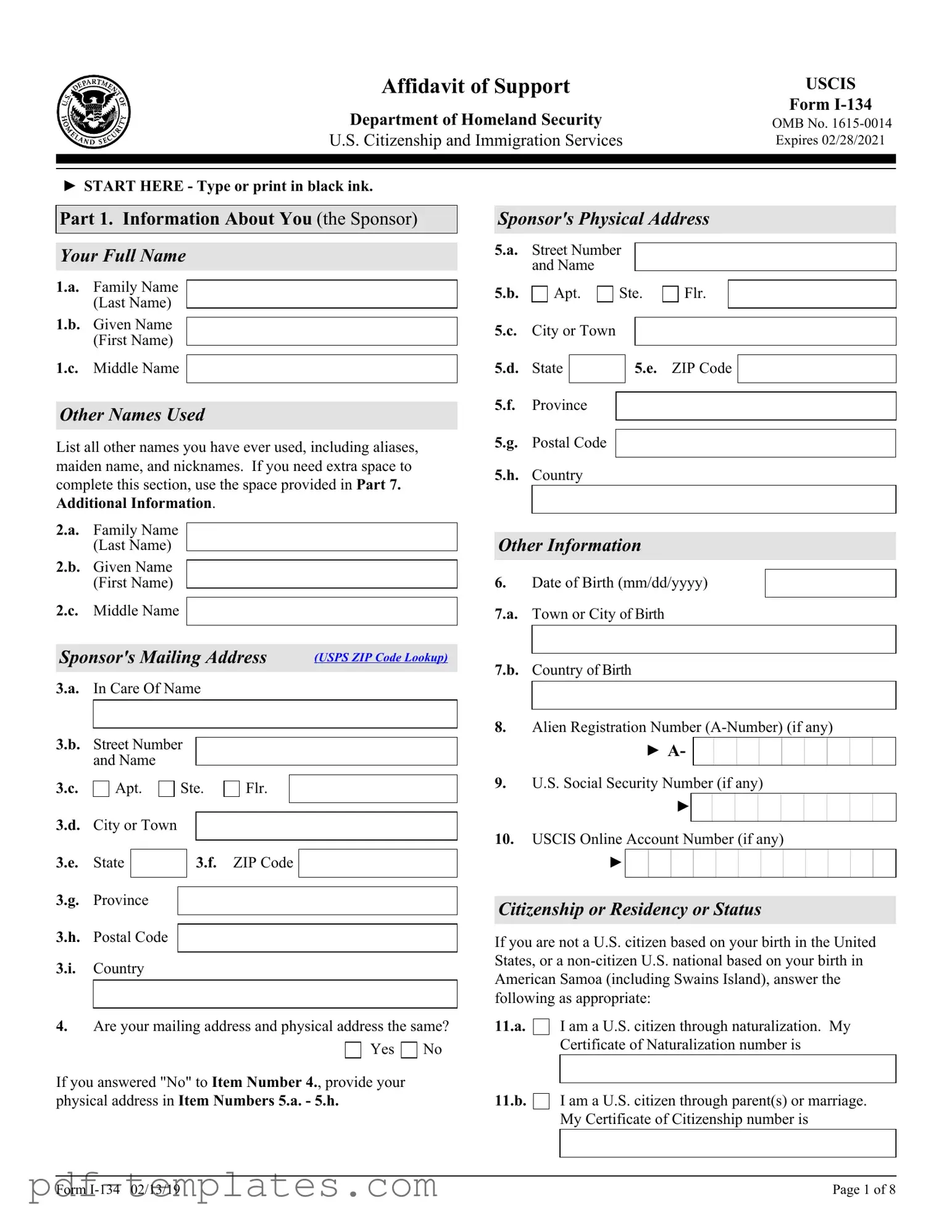The Affidavit of Support, Form I-864, is perhaps the most closely related document to the USCIS I-134 form. Both forms are designed to demonstrate that a sponsor has the financial means to support an immigrant and prevent them from becoming a public charge. However, while the I-134 is often used for non-immigrant visa applications, the I-864 is mandatory for most immigrant visa applicants. The I-864 requires a more comprehensive financial disclosure, including tax returns and proof of income, reflecting a higher level of commitment from the sponsor.
The USCIS I-130 form, Petition for Alien Relative, also shares similarities with the I-134 in that it serves to establish a relationship between a U.S. citizen or permanent resident and a foreign national. While the I-134 focuses on financial support, the I-130 is primarily about demonstrating familial ties. Both forms are integral to the immigration process, but they serve different purposes; the I-130 is a prerequisite for many immigrants seeking a green card, while the I-134 is often used to support non-immigrant visa applications.
The I-751 form, Petition to Remove Conditions on Residence, parallels the I-134 in that it involves proving ongoing support and commitment. This form is utilized by conditional residents who have been married for less than two years at the time of their green card approval. While the I-134 is a declaration of financial support for a visa applicant, the I-751 requires evidence that the marriage is genuine and not solely for immigration purposes. Both documents reflect the importance of financial stability and genuine relationships in the immigration process.
The I-864W, Exemption from Affidavit of Support Requirements, is another document that bears resemblance to the I-134. This form is used in specific circumstances where an applicant is exempt from the standard affidavit of support requirements. Like the I-134, the I-864W addresses financial considerations, but it serves a different population—those who may not require a sponsor due to their specific immigration status. Both forms highlight the nuanced approach that immigration policy takes regarding financial support and eligibility.
Lastly, the Form N-400, Application for Naturalization, can be viewed as similar in terms of its requirement for demonstrating good moral character and financial stability. While the I-134 is focused on sponsorship for non-immigrant visas, the N-400 assesses an applicant's qualifications for U.S. citizenship. Both forms require applicants to provide information about their financial situation, but the N-400 also delves into the applicant's history and conduct, showcasing a broader view of eligibility beyond mere financial support.
